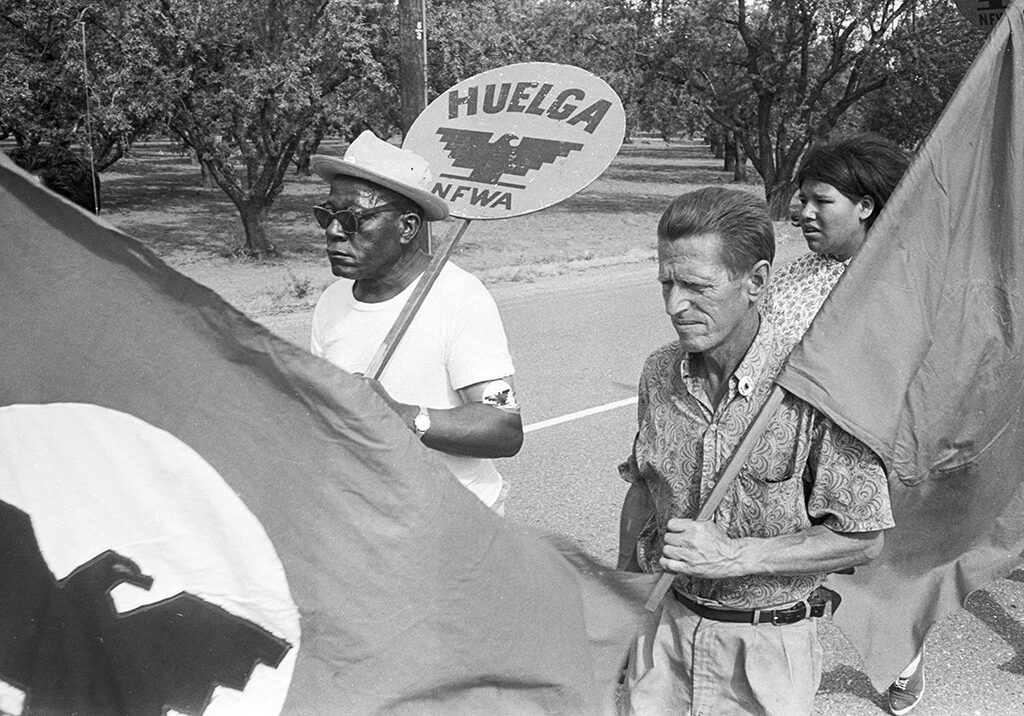They risked their lives in the fight for a better economic future for farmworkers and recognition that the men, women and children who picked produce in America’s fields were human beings and deserved to be treated with respect.
“Hope and Dignity: The Farmworker Movement,” curated by California State University, Northridge’s Tom & Ethel Bradley Center, captures the faces of hundreds of men and women who made up the movement. The exhibition opens this week at the Museum of Social Justice in downtown Los Angeles.
“The farmworker movement was a labor movement, but it was also a civil rights movement,” said CSUN journalism professor José Luis Benavides, director of the Bradley Center. “It’s the combination of both of those things that made the farmworker movement so impactful during the 1960s and probably one of the most important movements for the Chicano/Latino community in the United States in the 20th century.”
The exhibition focuses on the early years of the farmworkers’ struggle, marked by a historic grape strike, boycotts, a march from Delano to Sacramento, early efforts to organize workers in Texas, and César Chávez’ fast calling for nonviolence and sacrifice.
The diversity, energy and enthusiasm organizers and supporters infused into what was originally known as the National Farm Worker Association (NFWA) and is now the United Farm Workers (UFW) and “La Causa” (the cause) is reflected in the images of the marches, pickets, boycotts, elections, union meetings and musical and theatrical performances. Other images reflect the dignity of the work — performed in many cases by entire families, including children — and the indignity of their labor conditions, their housing and the violence perpetrated against them by strikebreakers and law enforcement.
Benavides pointed out that the farmworker movement did not just impact Latina/o/x lives.
“The original organizers were Latino, Filipino, Black and Middle Eastern,” he said. “They came from all over? and united to fight for better working conditions in the fields and ensure that all people were treated with the dignity due to them as human beings.”
The photos in the exhibition were captured by photojournalists Emmon Clarke and John Kouns and are part of the Tom & Ethel Bradley Center’s Farmworker Movement Collection housed in CSUN’s University Library. The images are juxtaposed with cartoons by Andy Zermeño that graced the union’s newsletter El Malcriado and inspired characters developed by playwright and actor Luis Valdez for performances by El Teatro Campesino.
The exhibition is the culmination of a grant the Bradley Center received from the National Endowment for the Humanities to create a digital archive of the farmworker movement. “Hope and Dignity” runs through Jan. 26, 2025, at the Museum of Social Justice, 115 Paseo de la Plaza, Los Angeles. The exhibition’s opening reception is on Saturday, Aug. 17, at 4 p.m. at the Museum of Social Justice.
The Bradley Center has adapted its farmworker movement archive into a do-it-yourself exhibition that educators can submit a request to download and use as an educational tool about a significant chapter of California and United States history. The do-it-yourself exhibition includes 12 panels in English and 12 panels in Spanish on different aspects of the farmworker movement, including an introductory panel and panels on Chávez, Dolores Huerta, people (huelguistas) who participated in the movement, the role of farm working children, El Teatro Campesino, the grape boycott, the pickets, the fieldwork, the first fast done by Chávez in 1968, the housing conditions, and the first march to Sacramento.
The Tom & Ethel Bradley Center’s archives contain more than one million images from Los Angeles-based freelance and independent photographers between the 1930s to the present. The core of the center’s archive is a large collection of photographs produced by African American photojournalists. Oral histories, manuscripts and other ephemeral materials support the photographic collection.
The archives contain more than 70 oral histories from African American photographers, civil rights leaders and organizers, individuals involved with the history of Los Angeles, journalism, the group Mexicans in Exile and the United Farm Workers, as well as the personal papers of many individuals and organizations. The center’s Border Studies Collection examines the issues surrounding the border between the United States and Mexico.
Like this:
Like Loading...
Related





 Tweet This
Tweet This Facebook
Facebook Digg This
Digg This Bookmark
Bookmark Stumble
Stumble RSS
RSS
































REAL NAMES ONLY: All posters must use their real individual or business name. This applies equally to Twitter account holders who use a nickname.
0 Comments
You can be the first one to leave a comment.